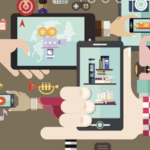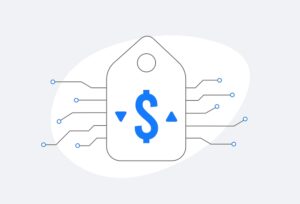 As the Internet of Things (IoT) gains momentum, it’s apparent that it will force change in nearly every industry, much like the Internet did. The trend will also cause a fundamental shift in consumer behavior and expectations, as did the Internet. And just like the Internet, the IoT is going to put a lot of companies out of business.
As the Internet of Things (IoT) gains momentum, it’s apparent that it will force change in nearly every industry, much like the Internet did. The trend will also cause a fundamental shift in consumer behavior and expectations, as did the Internet. And just like the Internet, the IoT is going to put a lot of companies out of business.
Despite these similarities, however, the IoT is really nothing like the Internet. It’s far more complex and challenging.
Lack of Standardization
Unlike the Internet, where the increased need for speed and memory was addressed as a by-product of the devices themselves, the sensors and devices connecting to the IoT network have, for the most part, inadequate processing or memory. Furthermore, no standard exists for communication and interoperability between these millions of devices. Samsung, Intel, Dell and other hardware manufacturers have set up a consortium to address this issue. Another equally powerful consortium formed by Haier, Panasonic, Qualcomm and others aims to do the exact same thing. This has raised concerns that each of these groups will engage in a battle to push their standard, resulting in no single solution.
New Communication Frontier
The Internet was designed for machine to human interactions. The IoT, on the other hand, is intended for machine-to-machine communications, which is very different in nature. The network must be able to support diverse equipment and sensors that are trying to connect simultaneously, and also manage the flow of large quantities of incredibly diverse data…all at very low costs. To meet these requirements, a completely new ecosystem—independent of the Internet—must evolve.
Data Privacy
The IoT also raises serious challenges for data security and privacy. Justified consumer concerns will call for stricter privacy standards and demand a greater role in determining what data they will share. These aren’t the only security issues likely to arise. In order for a complete IoT ecosystem to emerge, multiple players must use data from connected devices—but who owns the data? Is it the initial device that emits it, or the service provider that transports that information, or the company that uses it to provide the consumer better service offerings?
Geographic Challenges
For multinational organizations with data coming from various regions around the globe, things get even more complicated. Different countries have different data privacy laws. China and many parts of the EU, for example, will not let companies take data about their citizens out of their borders. This will result in the emergence of data lakes. To enable business decisions, companies must be able to access data within various geographies, run their analysis locally and disseminate the insights back to their headquarters…all in real-time and at low costs.
In spite of all these challenges, the IoT is not something companies can afford to keep at arm’s length. Like the Internet, it will empower consumers with more data and insights than ever before, and they in turn will force companies to change the way they do business. From an analytics perspective, it’s very exciting. Companies will now have access to quality data that, if they combine it with other sources of information, can provide them with immense opportunities to stay relevant.
As an example, let’s look at the medical equipment industry. Typically these companies determine what equipment to sell based on parameters like number of beds and whether the facility is in a developing or developed market. However, these and other metrics are a poor substitute for evaluating need based on actual use. A small hospital in a developing country, for example, will diagnose and treat a much wider range of diseases than a similar facility in a more developed region. By equipping the machines with sensors, these manufacturers can obtain a better understanding of what is occurring within each facility and optimize selling decisions more effectively as a result.
This is just one example to underscore the tremendous potential that the IoT holds for businesses. In order to truly realize these and other opportunities, companies must understand the challenges outlined above and have a framework in place to address them. In the early days of the Internet, few could have predicted its transformative impact on all facets of our lives—personal and professional. As the IoT heads into its next phase of maturity, we can expect to see a similar effect emerge.
Ravi Ravishankar is global head of product marketing and management at Equinix’s products, services and solutions group. Venkat Viswanathan is chairman at LatentView Analytics.




